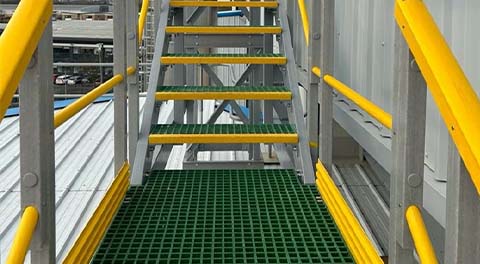loading...
- No. 9, Xingyuan South Street, Dongwaihuan Road, Zaoqiang County, Hengshui, Hebei, China
- admin@zjcomposites.com
- +86 15097380338
- Welcome to visit our website!
frp railing
The Rise of FRP Railings A Modern Solution for Safety and Aesthetics
In recent years, the demand for advanced building materials has skyrocketed, driven by the need for safety, durability, and aesthetic appeal. One of the standout materials that has emerged during this revolution is Fiber Reinforced Polymer (FRP). This composite material, which combines polymer resins with reinforcing fibers, has gained significant popularity in the construction and architectural sectors, particularly in the design and installation of railings. In this article, we will explore the benefits of FRP railings and why they represent a modern solution for both residential and commercial applications.
The Composition and Characteristics of FRP
FRP is composed of two fundamental components a polymer matrix and reinforcing fibers. The polymer serves as a binding agent, while the fibers, typically glass or carbon, provide strength and rigidity. This combination results in a lightweight yet incredibly strong material, capable of withstanding harsh environmental conditions. Additionally, FRP is resistant to corrosion and UV degradation, making it an ideal choice for outdoor applications where traditional materials like wood or metal may deteriorate over time.
Benefits of FRP Railings
1. Durability One of the most significant advantages of using FRP for railings is its exceptional durability. FRP railings can endure extreme weather conditions, from intense sunlight to heavy rain and snow, without warping, rusting, or fading. This resilience translates into lower maintenance costs and less frequent replacements, offering a long-term investment for property owners.
2. Lightweight Compared to traditional materials such as steel or aluminum, FRP is remarkably lightweight. This quality simplifies the installation process, reducing labor costs and time. Moreover, the reduced weight does not compromise structural integrity, allowing for easier handling and transportation.
3. Design Versatility FRP materials can be molded into various shapes and colors, providing architects and designers with tremendous flexibility to create aesthetically pleasing railings that enhance the visual appeal of any structure. Whether for a modern commercial building or a classic residential home, FRP railings can be tailored to suit the design needs and architectural style.
frp railing

4. Safety Safety is paramount when it comes to railings, and FRP excels in this area as well. The material can be engineered to meet or exceed industry safety standards, ensuring that the railings provide reliable protection. Additionally, FRP can be designed to be slip-resistant, making it an excellent choice for environments where safety is a concern, such as pool areas, staircases, and balconies.
5. Eco-Friendly As sustainability becomes increasingly important in construction, the eco-friendliness of FRP is an attractive feature. Many manufacturers are now producing FRP products using recycled materials, reducing the ecological footprint. Additionally, because FRP is resistant to corrosion and degradation, its longevity contributes to less waste in landfills over time.
Applications of FRP Railings
FRP railings find application in a wide range of settings. In commercial buildings, they are often used on balconies, terraces, and walkways to provide safety while enhancing the overall aesthetic. In residential construction, FRP railings are popular for decks and fences, allowing homeowners to enjoy outdoor spaces without compromising safety.
Moreover, FRP railings are also widely used in infrastructure projects, such as bridges and waterfronts. Their ability to withstand harsh conditions and provide reliable safety features makes them an ideal choice for public installations.
Conclusion
FRP railings represent a significant advancement in building materials, combining durability, safety, and design versatility. As more architects and builders recognize the advantages of utilizing FRP in their projects, it is likely that this innovative material will continue to grow in popularity. By embracing FRP railings, property owners can ensure that their spaces are not only beautiful but also built to last, making them an excellent choice for modern construction needs. As we move further into the future, the role of FRP in architecture and construction will undoubtedly become even more prominent, shaping the landscapes of our communities.
-
The Rise of FRP Profiles: Strong, Lightweight, and Built to LastNewsJul.14,2025
-
SMC Panel Tanks: A Modern Water Storage Solution for All EnvironmentsNewsJul.14,2025
-
GRP Grating: A Modern Solution for Safe and Durable Access SystemsNewsJul.14,2025
-
Galvanized Steel Water Tanks: Durable, Reliable, and Ready for UseNewsJul.14,2025
-
FRP Mini Mesh Grating: The Safer, Smarter Flooring SolutionNewsJul.14,2025
-
Exploring FRP Vessels: Durable Solutions for Modern Fluid HandlingNewsJul.14,2025
-
GRP Structures: The Future of Lightweight, High-Performance EngineeringNewsJun.20,2025
